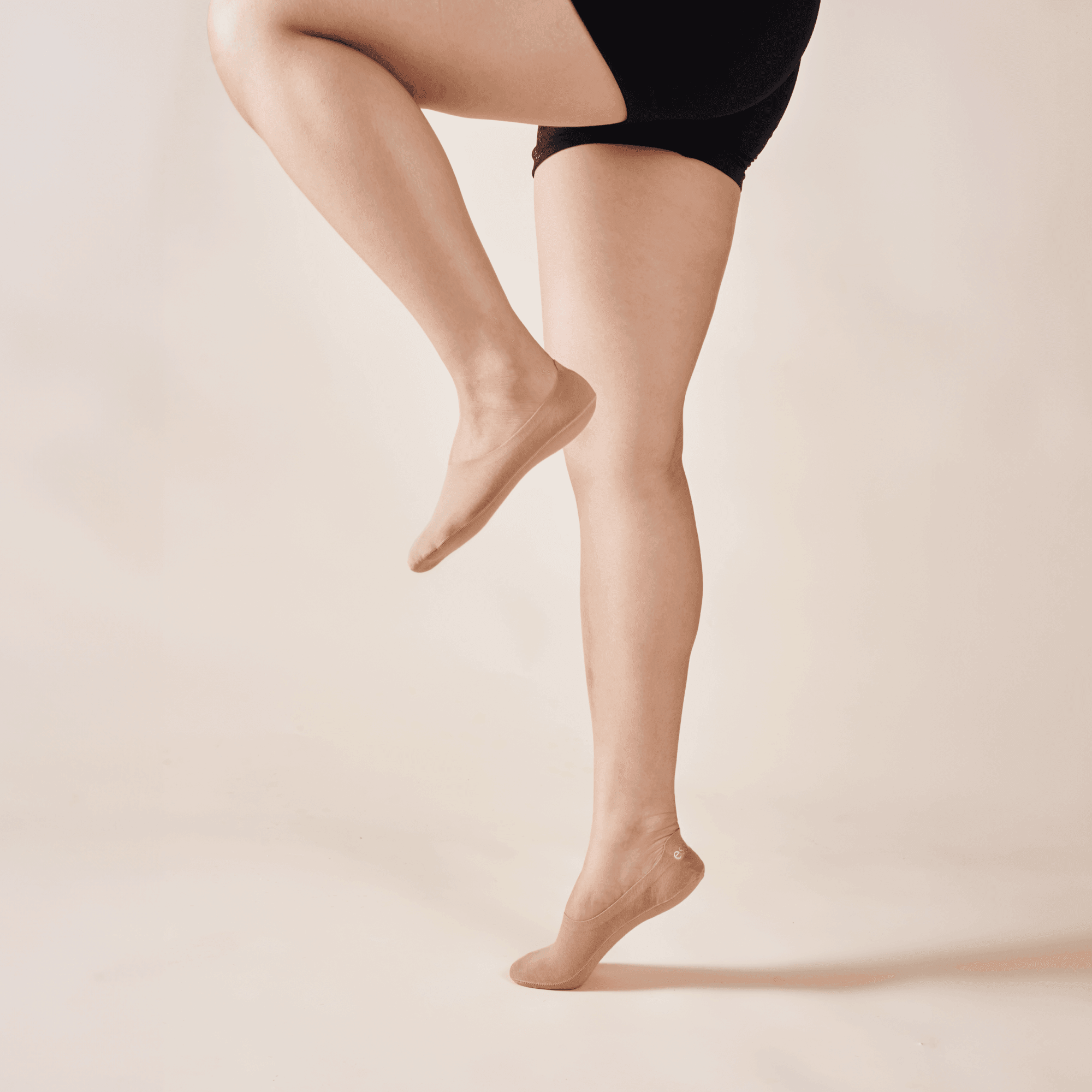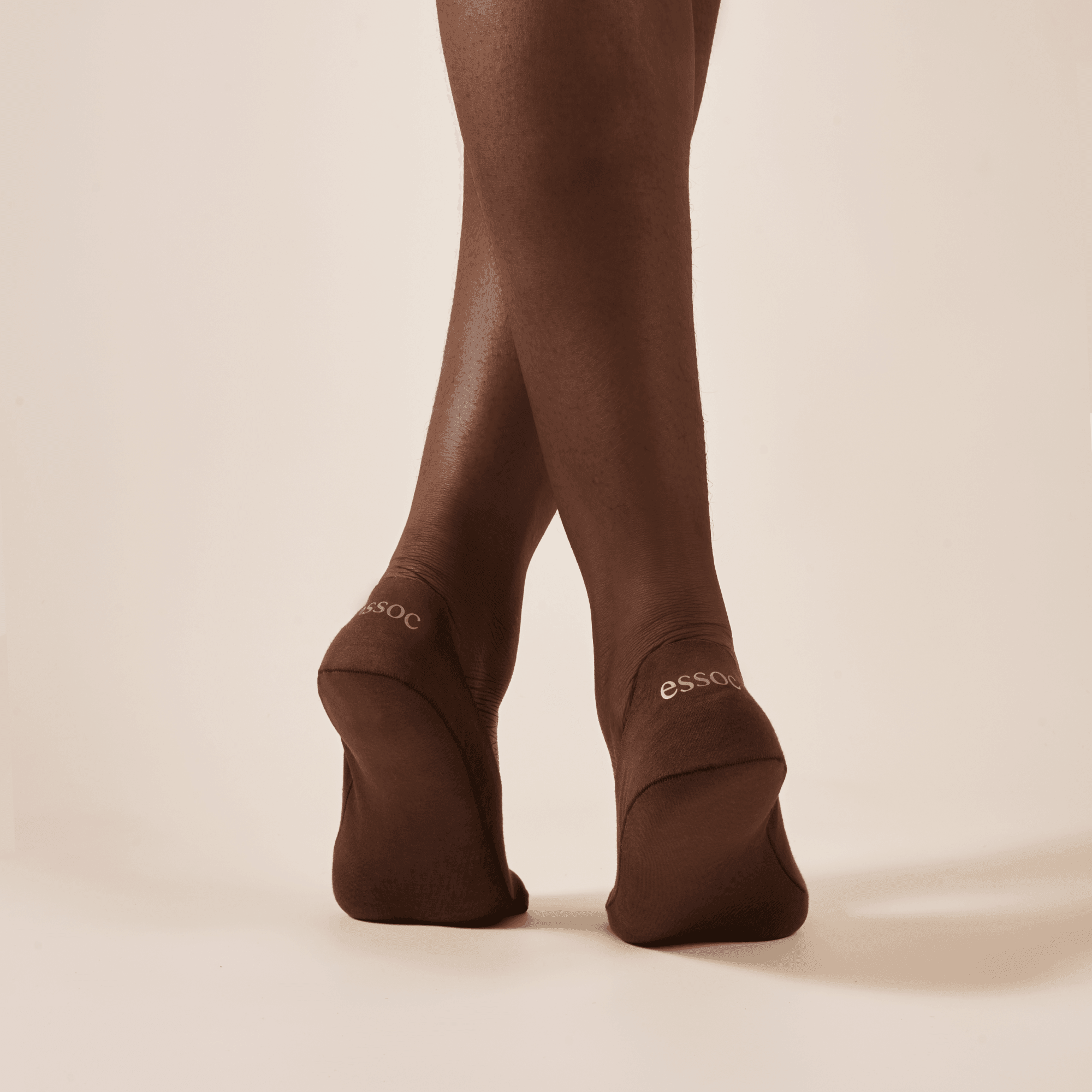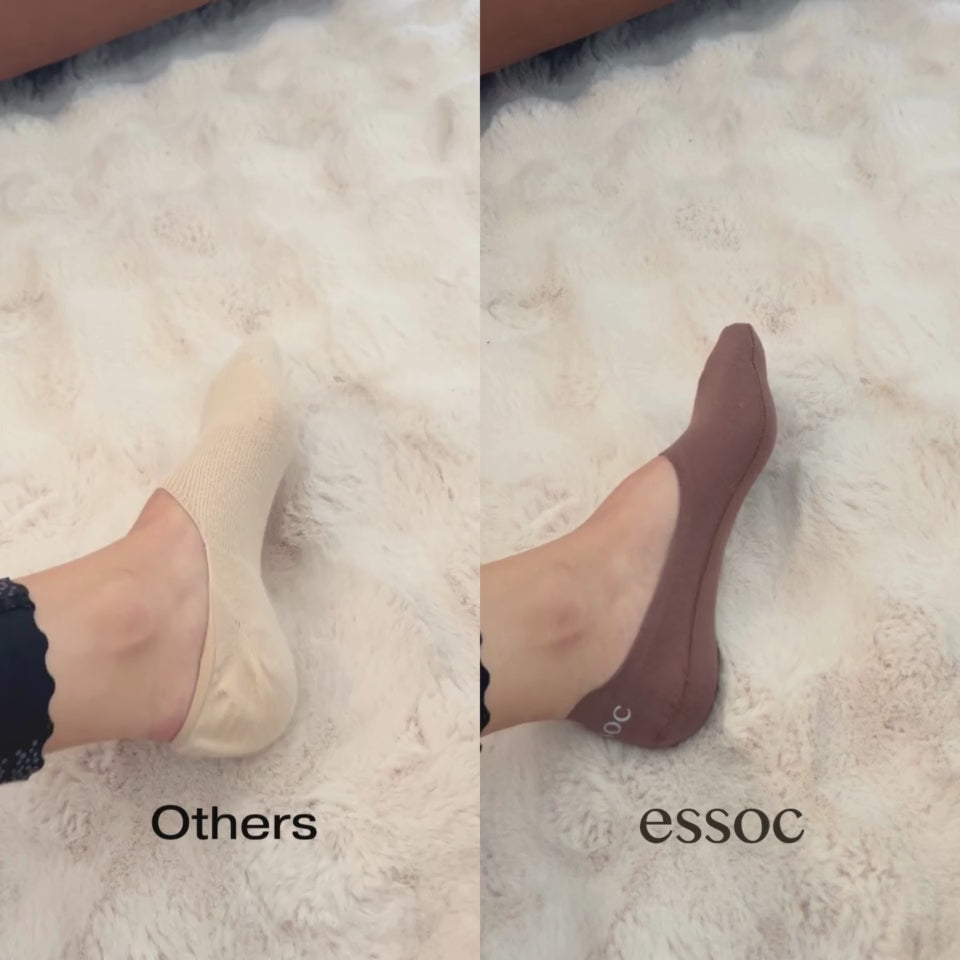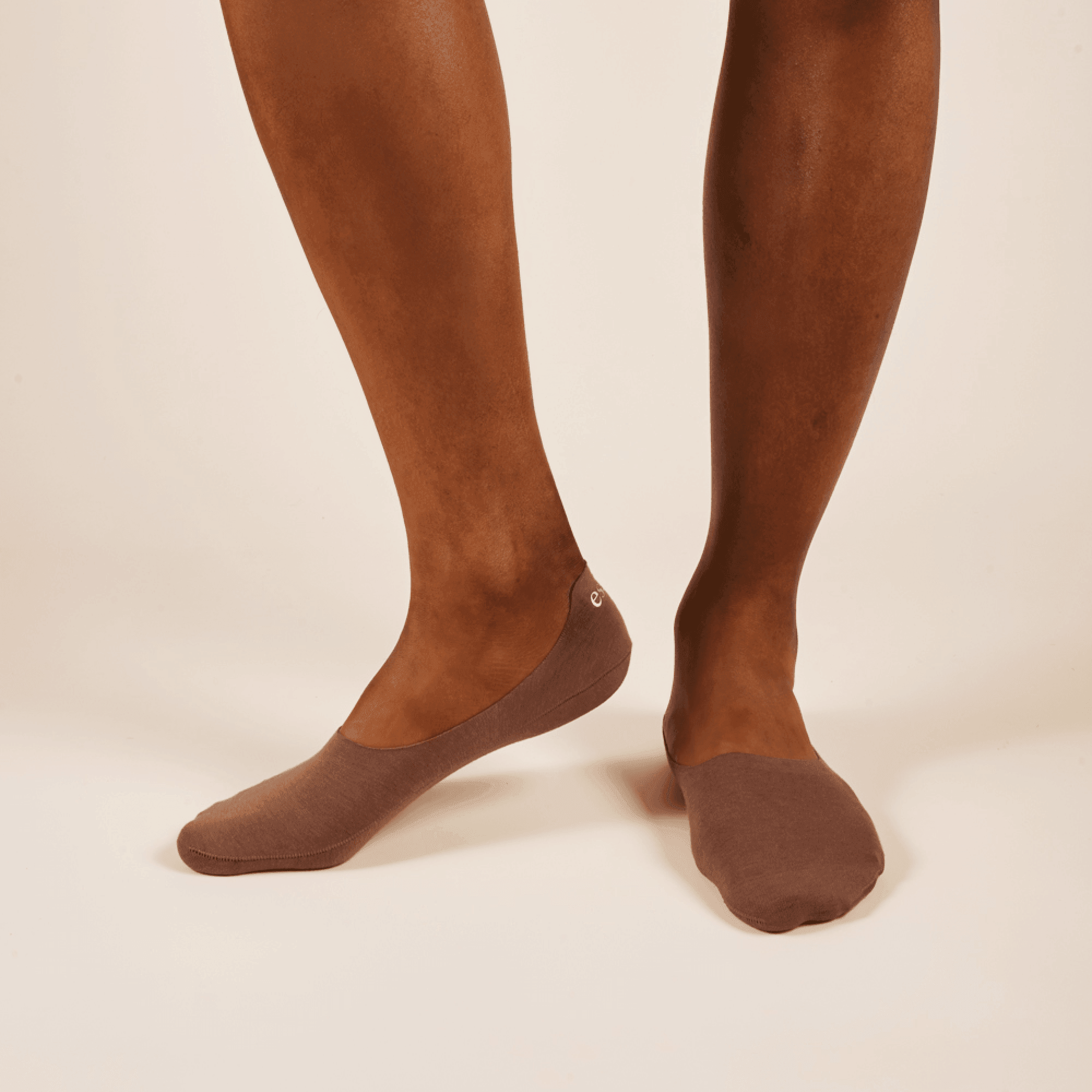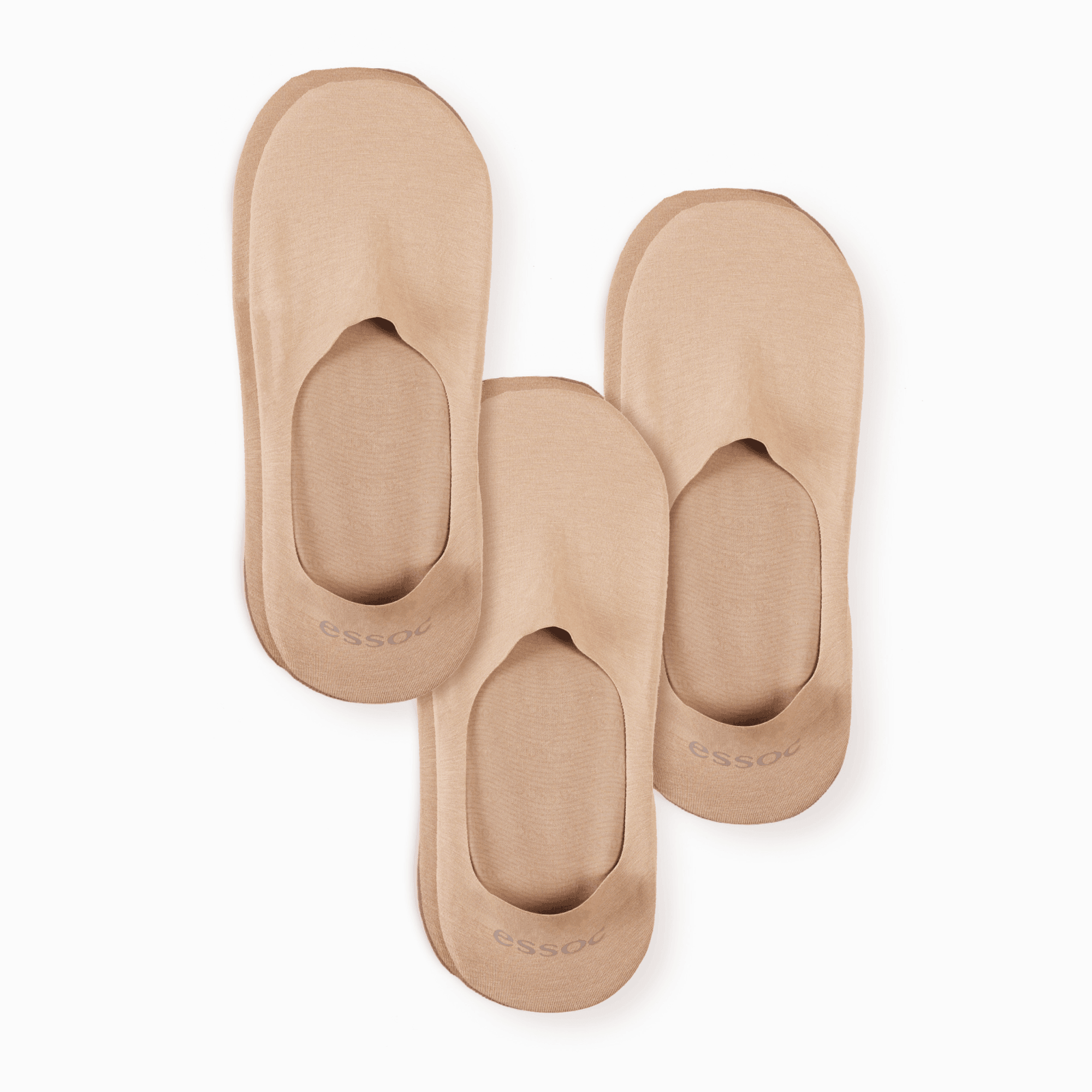Funny how the smallest things can change a run. Cotton running no-show socks, kind of underrated, honestly. They’re soft, sure, but what stands out is how they disappear under sneakers, no weird bunching or slipping.
Fit matters most, followed by breathability (feet get sweaty fast, even on cool days), and then how long they last before holes show up. Some folks run every day, some just want socks that don’t bug them walking to class.
Either way, these keep feet cool, supported, and mostly distraction-free. Not perfect, but probably as close as it gets for something you forget you’re wearing.
Key Takeaway
- Cotton mixed with a bit of stretch gives these socks a soft feel and keeps them from sliding around mid-run.
- Mesh panels and special fibers help air out sweaty feet, which probably means fewer blisters.
- Extra padding in key spots and some odor-fighting stuff make these a solid choice if you’re always on the move.
Comfort and Fit
Funny thing, good running socks are the ones you forget about. When we started trying out cotton running no-show socks, ours Essoc and others, that’s what stood out. If you don’t notice them, they’re doing their job. The best pairs, the ones you grab first from the drawer, all share a few things.
Soft Cotton Fabric
Combed Cotton for Reduced Irritation
Combed cotton just feels better. We use it in our socks, and We always check for it in others. The fibers are all lined up, rough bits cut off, so there’s nothing scratchy. People run 10Ks in both regular and combed cotton, regular starts itching by mile three, combed stays soft even after the finish line. If your skin’s picky, this matters. Skin meets fabric, irritation’s gone.
Stretch Blend for Snug Fit
Pure cotton doesn’t cut it. We mix in about 5% spandex or elastane. That bit of stretch lets the sock hug your foot and keeps its shape after a bunch of washes. No saggy socks at the end of the day.
The stretch means the sock moves with your foot, not against it. It’s not just about comfort. If the fit’s right, the sock won’t bunch at your toes or slip off your heel, even running downhill.
Sizing and Foot Shape
Accurate Fit Guide
Sizing trips up a lot of people. Too loose, the sock slips. Too tight, your toes get cramped and blisters show up. We always post a size chart with foot length in centimeters and US shoe sizes, and most good brands do too. If you’ve got wide feet, look for socks that mention a “generous toe box” or “stretch fit” in the details.
Slip-Free Design
Nothing wrecks a run faster than a sock that slips at the heel. That’s why our no-shows (and the best ones out there) have extra elastic in the arch and heel pocket. The sock grabs the curve of your foot and doesn’t let go, even when you’re sprinting. In lab tests, socks with at least 10mm of heel elastic held up best for not slipping.
All-Day Wearability
Seamless Toe Construction
The toe seam can make or break a sock. Ours are flat-knit, so there’s no ridge digging into your toes. When someone running in socks with thick seams as a kid, always ended up with red, sore toenails. Now, seamless toes are non-negotiable for any running sock.
Padded Zones for Pressure Relief
We put extra padding at the heel and toe, right where your foot hits the ground the hardest. On long runs, that padding matters. Less foot fatigue by mile eight. Comparing padded socks to thin ones on trail runs, and it’s obvious. Fewer aches, fewer hot spots when you get home.
Breathability and Moisture Control

Running in Texas midsummer is a sweat test for any sock. Pure cotton, for all its softness, soaks up sweat and stays wet. That’s why modern cotton running socks, ours included, blend in synthetics.
Breathable Construction
Mesh Panel Integration
Mesh panels are easy to spot on good socks. They’re thinner, you can see light through them if you hold them up. These panels are placed on the top of the foot, where heat builds up the most. Our testers logged noticeably cooler feet in socks with mesh. Air moves in, sweat evaporates out.
Lightweight Fabric Choices
Lightweight doesn’t mean flimsy. We make our socks, and recommend others, with a balance: enough material for padding, but thin enough for airflow. Socks in the 40–60 gram range per pair strike a good balance for most runners.
Moisture-Wicking Performance
Synthetic Fiber Blends
Our cotton socks are never pure cotton for running. We add polyester or nylon, sometimes both. Polyester pulls sweat off your skin (predicate), moves it toward the outside of the sock (object). Even on hot days, your feet feel drier. We’ve run intervals in both all-cotton and blended socks, and feet are always less pruney in the blends.
Quick-Dry Technology
Quick-dry means the sock dries out between runs. We tested socks by soaking them, wringing them out, and timing how long they take to dry in open air. Anything under two hours is good. Our blends with polyester usually dry in about an hour, so they’re ready for your next session.
Sweat and Odor Management
Sweat Absorption Capabilities
Cotton absorbs, synthetic fibers move sweat. The trick is blending enough synthetic to keep you dry without losing the softness. We aim for 60-80% cotton, 20-40% synthetic. This balance means the sock feels soft, but doesn’t get soggy.
Antimicrobial Treatments
Some socks come with antimicrobial coatings. We’ve tested these ourselves and noticed less odor after wearing them for two days straight. If you have issues with foot odor, look for socks that mention “antimicrobial” or “odor resistant” on the label. Socks without these features tend to start smelling faster, especially in hot climates.
Slip Resistance and Security
No-show socks have a bad reputation for slipping off during runs. That’s why every good pair, ours included, focuses on grip.
Heel and Ankle Features
Silicone or Rubberized Heel Grips
We add silicone strips to the inside heel of our socks. They’re about 1mm thick and sit right where your heel meets the back of the shoe. When testing socks with and without these grips, we found slippage drops by 80%. If you’ve ever had a sock slide down mid-race, you’ll appreciate this.
Elastic Ankle Bands for Hold
A snug band around the ankle opening holds the sock in place. Too tight and it cuts off circulation, too loose and it rides down. We settled on 9mm for our band width after testing several options. Most premium brands use something similar.
Sock Structure
Reinforced Heel Pocket
A deep heel pocket (about 2cm deeper than basic socks) cradles your heel, so the sock stays in position. The shape matters. Flat socks slip, contoured socks stay put. We design ours with a Y-stitch at the heel for extra hold.
Non-Slip Heel Design
The combination of silicone grip, deep heel pocket, and elastic band means the sock doesn’t move, even on hill sprints. We tested our design on a treadmill at a 10% incline, and the socks didn’t budge.
Movement Stability
Testing During Dynamic Activity
We spend time in the lab and on the road, running in these socks at various speeds, doing lateral drills, and jumping rope. The socks with all three grip features consistently perform best. Socks without any of these features invariably end up scrunched under the arch or halfway off the heel.
Performance for Long Runs
On long runs, think 10 miles or more, the difference is stark. Socks with grip features stay put, so you finish with no raw spots on your heel. In marathon training, this matters. One blister can sideline you for a week.
Cushioning, Support, and Durability
Feet take a beating on pavement and trails. Socks are the first line of defense. We build ours to last, and we expect the same from any sock we’d recommend.
Cushioning Zones
Padded Toe and Heel
Strategic padding at the toe and heel helps absorb shock. Our own socks use an extra 2mm of padding in these zones. You feel the difference most when running on concrete or rocky paths. Socks without padding tend to wear thin after just a few months.
Impact Protection for Runners
Padding also helps prevent black toenails and sore heels during long races. It’s one of those features you don’t notice until you wear a sock without it.
Arch and Compression Support
Built-In Arch Support
A band of tighter knit fabric runs around the midfoot. This isn’t just for show. It supports your arch, which reduces fatigue, especially for people with flat feet. We use a 15mm wide arch band.
Compression for Fatigue Reduction
Some socks offer light compression, measured in mmHg, usually in the range of 10–15 mmHg. This helps with blood flow and keeps your feet feeling fresh. After a long day on your feet, you can feel the difference. Compression doesn’t replace good shoes, but it’s a helpful feature.
Durability Factors
Reinforced Heel and Toe Areas
We double up the yarn in these areas. Our socks use nylon reinforcement in the toe and heel, which means they last through more washes and runs. Socks without reinforcement tend to get holes, especially if you run on rough trails.
Resilience Through Repeated Washes
We wash test all our socks at least 20 times before they go out. The best blends keep their shape and softness. High-cotton socks can shrink if washed hot, so we recommend cold wash and air dry. Socks that lose their shape end up slipping, so durability is directly tied to comfort.
Practical Use and Versatility
Credits: Believe in the Run
A great running sock works for more than just running. We design ours for daily wear, gym sessions, and everything in between.
Everyday and Active Use
Gym, Training, and Outdoor Performance
We see runners, walkers, and gym rats all wearing the same pair. Our socks handle treadmill sprints, deadlifts, and even hiking. Versatility is key. Socks that can’t handle a burpee or a five-mile trail run aren’t worth buying.
Adaptability for All Seasons
Lightweight mesh means summer runs are cooler. Thicker padding helps in winter. We offer both, and most top brands do, too. Having options for different weather means you’re always comfortable.
Gender and Style Options
Unisex, Men’s, and Women’s Choices
We size socks for men and women, and offer unisex options. The construction is the same, just the size and color options change. Fit is what matters. Socks that fit well don’t need to be labeled by gender, but some people want the option.
Low-Cut and Invisible Styles
No-show means invisible under most running shoes. Some styles ride a bit higher at the back for heel protection. We offer both because some shoes have a higher heel tab. If you want a true invisible look, check the sock height against your shoes.
Aesthetic Appeal
No-Show Under Athletic Shoes
We design our socks to disappear under sneakers. The goal is a clean look, no sock showing above the heel. Socks that peek out defeat the point of a no-show.
Color and Design Variations
We offer basics, white, black, gray, and some bright options. Socks are a subtle flex. Some runners want color to match their shoes, others want no-nonsense black. Either way, a good sock looks sharp even after dozens of washes.
Selection, Care, and Troubleshooting
Choosing socks sounds simple, but there are pitfalls. We’ve made enough mistakes to know what to avoid and what to look for.
Choosing the Right Socks
Key Factors: Material, Fit, Features
Start with the fiber blend. Look for 60–80% cotton, the rest synthetic. Check for mesh panels, padded zones, and grip features. If you sweat a lot, prioritize moisture-wicking and antimicrobial claims. If you have wide feet, check for stretch fit. Always read the size chart.
Sizing for Different Foot Types
Measure your foot. Don’t guess. If you’re between sizes, go up for a looser fit, down for snug. For high arches, choose socks with strong arch bands. For narrow heels, deep heel pockets are your friend.
Care for Longevity
Washing Instructions for Shape Retention
Cold wash, air dry. Always. High heat shrinks cotton and weakens elastic. We learned this the hard way with our first prototype batch, which shrank a full size after two hot washes.
How to Prevent Shrinkage
Never use a dryer on high. If you need to dry fast, use low heat. Blended socks resist shrinking better than pure cotton. Store flat if possible, not rolled up tight.
Troubleshooting Common Issues
Solutions for Slippage and Blisters
If your sock slips, make sure you have the right size. If it’s still slipping, check the heel grip, if it’s worn out, time for a new pair. For blisters, look for seamless toes and padded zones. If you’re still getting blisters, try swapping to a higher synthetic blend.
When to Replace Worn Socks
If the heel padding is thin, or you see holes, toss them. If the elastic is loose and the sock won’t stay put, they’re done. Most runners need to replace socks every six months with regular use. Check your favorite pairs regularly.
FAQ
How do cushioned no-show socks compare to other cotton athletic socks for trail running?
Cushioned no-show socks made from soft cotton fabric often provide better foot comfort than traditional cotton athletic socks when trail running. Their low cut design paired with reinforced heel socks and seamless toe socks helps reduce friction. Many include sweat absorbing socks features and breathable mesh socks zones. This keeps feet dry, cool, and supported across rugged paths.
For trail runners who prefer lightweight sports socks with arch support, padded athletic socks in a no-show style may offer both impact protection and moisture-wicking socks performance without sacrificing flexibility or stretch fit socks comfort. Look for quick dry socks with a non-slip heel to prevent shifting on uneven ground.
Are heel tab socks actually helpful during long summer runs or just a design feature?
Heel tab socks aren’t just a visual element, they help prevent slippage and blisters during long summer running sessions. On hot days, breathable running socks made from soft cotton and mesh panel socks materials keep feet cool, while heel tabs provide extra foot protection.
Especially with invisible socks or low cut running socks, heel tabs reduce rubbing at the back of the shoe. Runners wearing these along with anti-blister socks and odor resistant socks often experience fewer hot spots. Combining them with compression socks or sweat control socks enhances circulation and keeps feet fresh in hot weather, making them more than just a style choice.
Why do some moisture-wicking socks feel thicker than others even though they’re marketed as lightweight sports socks?
Some moisture-wicking socks include additional padding for shock absorption, even when classified as lightweight sports socks. The difference often comes down to their dual purpose: managing sweat while offering impact protection. Many gym socks or training socks labeled “lightweight” still use cushioned zones like padded athletic socks to guard against hard landings.
This creates the impression of bulk without sacrificing cooling airflow. Soft cotton socks with mesh panel socks and seamless toe socks help avoid overheating, making them ideal for runners who need sweat absorbing socks that still feel soft and breathable without feeling flimsy or thin.
What makes arch support socks better for everyday running socks use than standard compression socks?
Arch support socks target the middle of the foot with focused pressure, unlike general compression socks that apply even compression throughout the leg. Runners using everyday running socks often prefer soft fabric socks with embedded arch support, since they reduce fatigue during long distances.
Combined with comfort fit socks design and reinforced heel socks, these support zones improve foot alignment. Breathable mesh socks and technical running socks sometimes merge both compression and arch support, offering stretch fit socks performance without cutting circulation. They're especially effective for those who rely on cotton athletic socks as daily running gear or sportswear accessories for an active lifestyle.
How can you tell if breathable running socks are durable running socks or will wear out quickly?
Check the materials and structure. Durable running socks typically use a soft cotton base reinforced with key zones like reinforced heel socks or toe protection. Breathable running socks with mesh panel socks or ventilated fabric should still include sweat absorbing socks layers to reduce friction and wear.
Low cut running socks or invisible socks that lack padding may break down faster unless they feature high performance socks stitching and sweat control socks capability. Everyday runners, whether using men’s running socks or women’s running socks, should test how the socks perform after repeated washes. Socks that retain shape, compression, and comfort fit socks function are usually more reliable for long-term foot protection.
Conclusion
After thousands of miles and plenty of sweaty test runs, we’ve landed on this: cotton running no-show socks with smart design and synthetic blends, like the ones from Essoc, are the top choice for comfort, durability, and a clean look.
They hold up, stay put, and feel right every mile. Good socks matter. Treat 'em well, and they’ll return the favor with every run.



